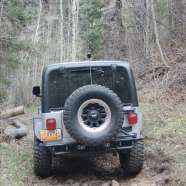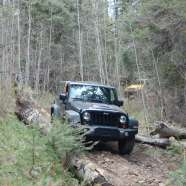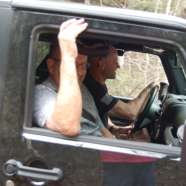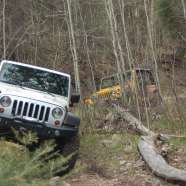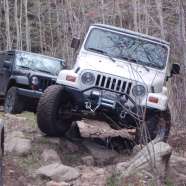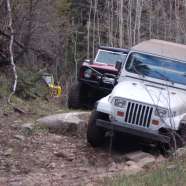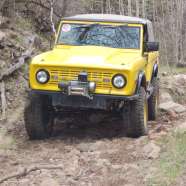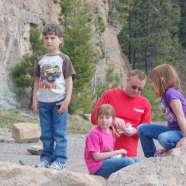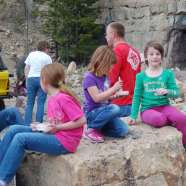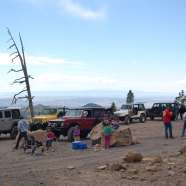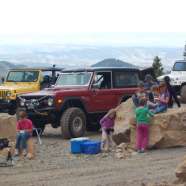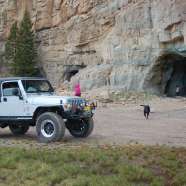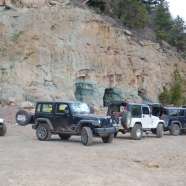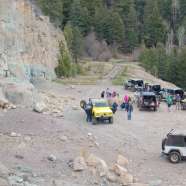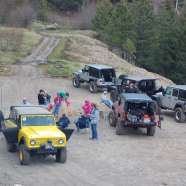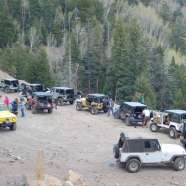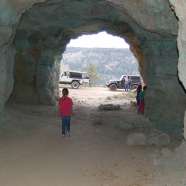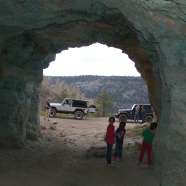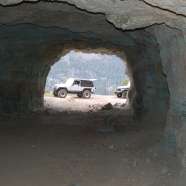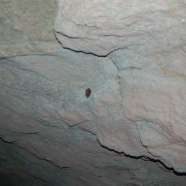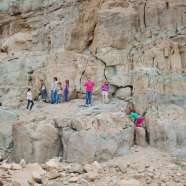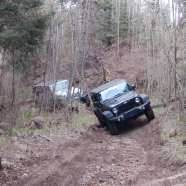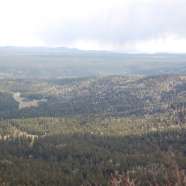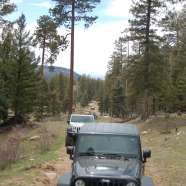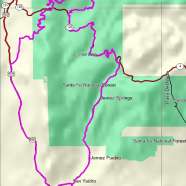TM Lemonade (Eureka Mesa)
By Frank G. Whiston (Trail Tales June 2013)
When the SFNF released the Environmental Impact Statement (EIS) for Travel Management last fall, we were disappointed with the magnitude of road and trail closures on the forest. Then the Motor Vehicle Usage Map (MVUM) came out this spring, leaving off even more of the routes that the club has enjoyed for decades. What makes this even more frustrating is the fact that NM4W has been there during the entire SFNF Travel Management process, providing input as outlined by the law, the National Environmental Policy Act (NEPA). NM4W’s Mark Werkmeister even went so far as to submit a Citizens’ Alternative document which included maps and descriptions of the club’s favorite routes and camping areas, why we do what we do, and the economic impact we have on the local communities. He essentially spoon fed the information to the forest service that was needed for their EIS, but none of it was used. The SFNF aligned with groups such as the Center for Biological Diversity and Wild Earth Guardians instead, writing the EIS to meet their agenda.
About a year and a half ago, Mark Werkmeister forwarded a video to me of some UTVs at a mine that was said to be in the Jemez Mountains asking if I knew where this was. I viewed the video, recognizing some of the surrounding landscape. Then I took to Google Earth on the computer and pinpointed the location to be just north of the Deer Lake community, along the Eureka Mesa. This spot looked really neat, but it was too late in the season to go and check it out. We have a big lemon here, so I decided to make some lemonade after studying the routes that we are allowed on, which are displayed on the MVUM. The roads leading to this mine were on the MVUM, so a trip to check it out was in order. Even though NMOHVA has filed a lawsuit to reverse the travel management decision, as law abiding citizens, we must abide by these severe access restrictions.
Eight Jeeps and two Early Broncos gathered in San Yisidro on Mother’s Day 2013 to experience what would be a nearly perfect day in the mountains. After about 30 minutes of driving north on Highway 550, the group turned toward the mountains via County Road 11/Old Highway 44. Once in the forest, we traveled on FR 20 and 533 to work our way north to NM Highway 126. Recent rains calmed the dust to a point such that it was almost non-existent. The next turn was on FR 70, toward San Gregorio Reservoir. Just short of the trailhead to the lake, we turned west, traversing a somewhat technical descent off the top of Eureka Mesa. We arrived at the abandoned Eureka Copper Mine just in time for lunch.
Natives of the area say that copper was first mined and smelted by the Conquistadores, who used Indian slaves to extract ore and coal locally. The arrival of the Santa Fe Railroad revolutionized the mining industry in New Mexico. Now base-metal ores and coal could be carried cheaply to smelters and other markets, and low-grade precious metal deposits could be worked at a profit. The Eureka Mine was a part of the Nacimiento mining district. Between 1881 and 1960 the district produced about 7,500,000 pounds of copper and several tens of thousands of ounces of silver, valued at over $1,100,000. Hand-sorted high-grade ore was hauled by wagon to a 30-ton smelter at Copper City (now known as the Deer Lake community), and matte was hauled by wagon 60 miles to the railroad at Bernalillo. However, like most mining enterprises during this period, Eureka was able to operate only in times of high metal prices. Not a single metal mine in the area was able to operate continuously for the 10 to 15 years ordinarily considered the minimum period for a profitable undertaking. Since 1900 there have been two short-lived attempts to revive the district, the first from 1916 to 1920, the second from 1955 to 1957. The dollar value of production in 1956, $231,831, was probably the highest in the history of the district. Most of it can be credited to the Eureka mine in Rio Arriba County. Analyses of mineralized fossil wood from the Eureka, Nacimiento, and San Miguel mines show that copper ranges from 38.9% to 65.8% and silver ranges from 5.6 to 6.8 ounces per ton. Mineralized fossil wood constitutes a small percentage of total rock volume at these localities; however, it contributes significantly to the average grade of ore in these deposits. Samples of rocks show a maximum of 4.7% copper and 0.088 ounce of silver per ton. The Eureka Mine could probably yield several tens of thousands of tons of lowgrade ore today. The high cost of transportation remains a severe handicap.
After some lunch, checking out the mine tunnels, and enjoying the view of Cabezon to the west; the group backtracked to FR 70 and continued on to the east. With an appetite for rougher terrain, we chose to travel FR 329 which comes within less than 1 tenth of a mile from the border of the San Pedro Parks Wilderness. Surprisingly, the open meadows were lush and green with small patches of snow remaining in the spots in the trees most protected from the sun. I sure am glad that I had the MVUM loaded onto my GPS along this road as there are several other roads leading off of this one that are now illegal to travel. FR329 eventually joined back up with FR 70, on which we continued on until reaching FR 103. At this point, the rest of the way back would be rather smooth and/or gravel, so those who had aired down filled their tires back up. We still did not experience any significant dust until on Highway 126 toward Fenton Lake.
I must say that there is nothing like a trip such as this one to remind ourselves of why we continue to fight for maintaining motorized access in this forest. NMOHVA is the only group fighting this decision and they need your support. Ask yourself how much your experiences in the Jemez are worth and donate to the Access Defense fund.
So, even though the SFNF has taken away many of the routes that have been historical favorites for our club, I highly recommend that you use the Travel Management—Travel Aids posted on the SFNF website as a tool to find something that you have never seen before, or to go visit a place that you may not have been to in a long time. Go out and make some Lemonade!


